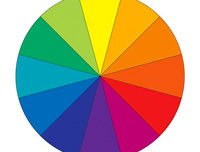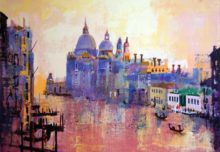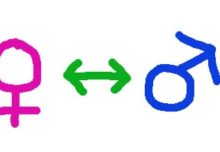…Names of colours…
Primary colours. Red Blue and Yellow.

The colour wheel theory has it that all colours can be created by mixing just the three primaries, with darker or lighter shades.
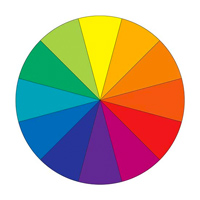
However, paint manufactures, supplying the decoration and art worlds, do not just provide the three primary colours ‘Red’, ‘Blue’ and ‘Yellow’. It just wouldn’t make commercial sense. So there are many variations.
Decorators colours
The household paint manufacturers Farrow and Ball describe ‘Elephants Breath’ as ‘an uplifting mid grey with a hint of magenta’.
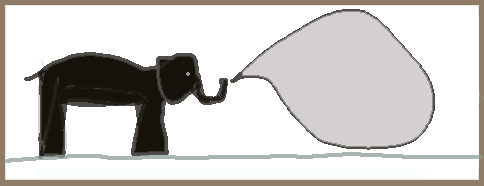
It is renowned for its characterful paint name, originally created by John Fowler, the notable English interior designer. 1906-1977.
F & B have other fascinating variations just in their range of grey colours such as ‘Calluna’, ‘Plummett’, ‘Ammonite’, ‘Peignoir’ ‘Skimming Stone’ ‘Moles Breath’, and ‘Mouse’s Back’.
All together household paint makers sell a vast range of paint names.
Artist’s colours.
The colours that artists know by name, supplied by artists paint manufacturers, are from a much smaller elite collection. Many artists have palettes of under a dozen colours. They get to know these and can mix a wide range of subtle variations, none of which would have names.
A typical artist’s palette might be… ‘Titanium White’ ‘Lemon Yellow’ ‘Vermillion’ ‘Alizarin Crimson’ ‘Sap Green’ ‘Yellow Ochre’ ‘Ultramarine’ ‘Cobalt Blue’ ‘Burnt Sienna’ ‘Lamp Black’.
The Biology.
The human eye has ‘Trichromatic vision’ with just three sorts of cones in the human eye.
The 6 – 7 million cones in each eye are sensitive to the three RGB colours. We detect all the colours that we see by adding or subtracting input from these three receptors. [There are exceptions and some women are sensitive to an input from a fourth wave.]
Additive colours. Red, Green and Blue. RGB
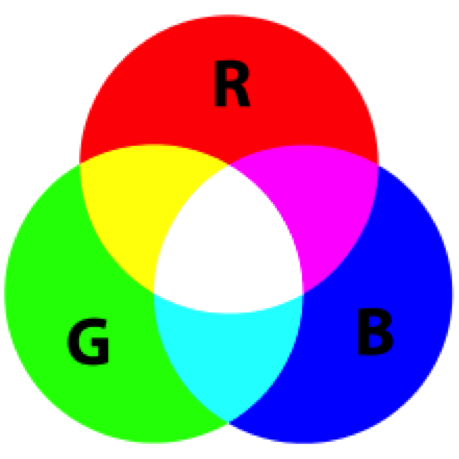
Additive colors are created by adding coloured light to black.
The RGB colour system is used to create all the colours on a television or computer display, magenta is a secondary colour, made by combining equal amounts of red and blue light at a high intensity.
For example in this system, magenta is the complementary colour of green, and combining green and magenta light on a black screen will create white.
Subtractive colours. Cyan, Magenta, Yellow. Black. CMYK
Subtractive colours are created by completely or partially absorbing (or subtracting) some light wavelengths and reflecting others.
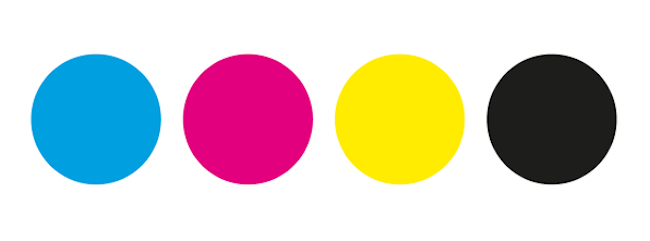 Cyan.
Cyan.
Turquoise blue green. Used in inkjet printing.
When both the cones that are sensitive to green light and the ones sensitive to blue light detect light from an object, our brains assume that it is because that colour is between where the blue and the green cones are sensitive — somewhere where their sensitivities overlap. And we see that colour as cyan.
[The name Cyan comes from a dye produced from cornflower in the ancient Greek kyanos for dark blue.]
Magenta.
Purplish Red. Magenta is midway between red and blue and complementary to green.
[Analine dye patented in 1859 by French chemist Francoise-Emmanuel Verguin who called it fuchsine but it was renamed after the French victory in the battle of Magenta fought between French and Austrians in 1859 near the town of Magenta in Lombardy.]
It is a common colour for flowers. Highest contrast to leaf colours attracting insects for pollination.
In the CMYK colour model, used in colour printing, it is one of the three primary colours, along with cyan and yellow, used to print all the rest of the colours. If magenta, cyan, and yellow are printed on top of each other on a page, they make black. In this model, magenta is the complementary colour of green, and these two colours have the highest contrast and the greatest harmony. If combined, green and magenta ink will look dark grey or black. The magenta used in colour printing, sometimes called process magenta, is a darker shade than the colour used on computer screens.
Yellow.
Primary or secondary.
The colour between orange and green on the visual spectrum. It is a primary colour used in painting or colour printing. In the RGB model, used to create colours on television and computer screens, yellow is a secondary colour made by combining red and green at equal intensity.
Conclusion.
One of my personal favourite colours is ‘Gamboge’, which is a gorgeous orangy yellow. It’s name originates from Camboja an old form of the name Cambodia, [Kampuchia].
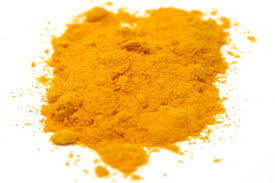
It is all very confusing isn’t it !?
************************************************

